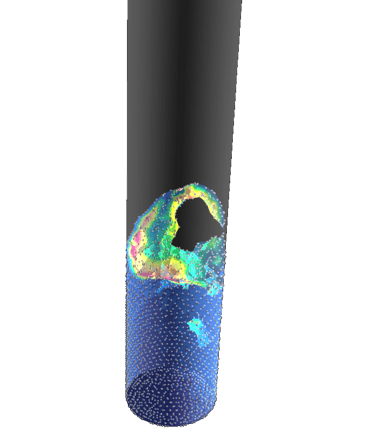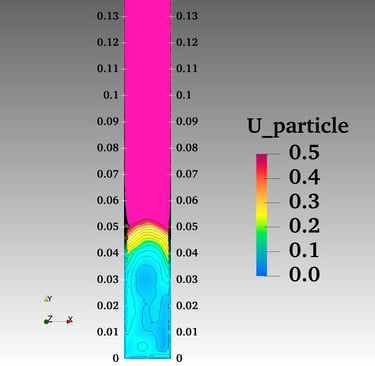Optimizing Fluidized Bed Reactor Performance Using CFD Simulation
Introduction
Fluidized bed reactors (FBRs) are pivotal in the chemical industry, facilitating processes such as catalytic cracking, polymerization, and gasification. Their efficiency hinges on optimal hydrodynamics, heat transfer, and reaction kinetics. Computational Fluid Dynamics (CFD) has emerged as an indispensable tool in analyzing and enhancing the performance of these reactors, enabling engineers to visualize complex flow patterns and predict reactor behavior under various operating conditions.
Objective
The primary goal was to employ CFD simulation to analyze the performance of an industrial-scale fluidized bed reactor, focusing on:
Identifying and mitigating issues related to gas-solid flow dynamics.
Enhancing mixing efficiency and uniformity within the reactor.
Optimizing reactor design parameters to improve overall performance
Methodology
A detailed CFD model of the fluidized bed reactor was developed, incorporating:
Geometry and Mesh Generation: Accurate representation of reactor internals, including distributor plates and cyclone separators.
Multiphase Flow Modeling: Utilization of the Eulerian-Eulerian approach to simulate gas-solid interactions.
Turbulence Modeling: Application of the k-ε turbulence model to capture turbulent flow behavior.
Boundary Conditions: Implementation of realistic inlet velocities, temperature profiles, and pressure conditions.
Models Used
Arrhenius-Based Reaction Kinetics:
Accounts for catalyst deactivation due to carbon deposition.
Incorporates temperature and methane concentration dependencies.
Gidaspow-Ergun-Wen-Yu Drag Model:
Utilized for interphase drag force calculations.
Kinetic Theory of Granular Flow (KTGF):
Models inter-particle interactions and granular temperature.
Ranz-Marshall Heat Transfer Model:
Describes heat exchange between gas and particles.
Observations and Results
Flow Regime:
Transition to bubbly flow observed beyond a flow rate of 5 LPM.
Bed Height:
Maximum height attained by particles verifed by experiment.
Reaction Efficiency:
Higher methane concentrations and flow rates increased reaction rates but reduced catalyst lifetime.
Conclusion
This study validates the application of advanced CFD modelling for analysing the catalytic decomposition of methane in fluidized bed reactors.
Key findings include:
Impact of inlet flow rates and methane concentrations on fluidization and reaction kinetics
The role of carbon deposition in catalyst deactivation.
The efficacy of the Gidaspow-Ergun-Wen-Yu model and KTGF for simulating fluidized bed behaviour.
Future work can expand upon this foundation by integrating chemical reaction kinetics with economic analyses for industrial-scale implementations of CDM technology. The insights provided here can guide both experimental designs and process optimization for hydrogen production.






